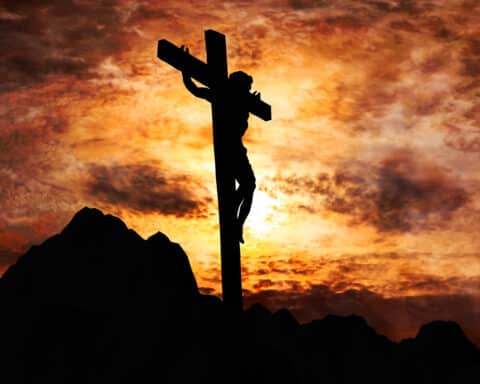In ancient Rome, the emperor draped himself in regal purple, the priests of Mars wore crimson vestments to honor the bloody god of war and families in mourning shrouded themselves in black.
But when Christian bishops, priests and deacons stood at the altar they always wore white. Like the emperor’s purple and the mourners’ black, the clerics’ choice of white was not random. Philosophers wore white. So did senators. By their white robes, the clergy announced that they were the teachers of the faithful and the rulers of the Church.
The development of the liturgical colors we see every day at Mass appears to be linked to the development of the liturgical calendar. During its first 300 years, the Church’s only holy days were Sunday, Easter and Pentecost, although local churches celebrated the feast days of their local martyrs with Mass at the saint’s tomb.
After Emperor Constantine published his Edict of Milan in 315, which permitted the Church to emerge from the catacombs, every aspect of liturgical life started to expand. In the fourth century, Christmas and Epiphany were added to the calendar. Christians in Asia Minor were celebrating the Assumption of Our Lady by the fifth century. Local churches also began to dress their clergy in colored vestments to emphasize the special character of holy days and liturgical seasons.
Initially, the variety of liturgical colors ran through the whole spectrum, but by 1200 in the West the main liturgical colors were white, red, green, black and violet or purple. These five colors are still the most common colors of vestments for the Roman Catholic Church. (The Eastern Rite Churches follow a different tradition of liturgical colors.)
Deciphering colors
White represents joy, innocence, purity and glory. White vestments are worn during the seasons of Easter and Christmas; on all feasts of Our Lord other than his Passion; on feasts of the Blessed Virgin; the angels and those saints who were not martyrs.
Red is the color of blood and represents the burning love of the Holy Spirit. Red vestments are worn on Palm Sunday, Good Friday, all feasts of Our Lord’s Passion, on Pentecost and on the feast days of martyrs.
Green is the color of rebirth and hope, especially of hope for eternal life. Green is worn during the liturgical season known today as Ordinary time.
Violet or purple represents sorrow and penitence. It is the color for Advent and Lent, as well as the color of the stole the priest wears when he hears confessions.
Black is the color of mourning. Contrary to anything you may have heard, black or violet vestments may be worn at funeral Masses.
Rose, a joyful color, is worn on only two days a year: Gaudete Sunday, the Third Sunday of Advent and Laetare Sunday — the Fourth Sunday of Lent. Rose vestments lift some of the gloom of the seasons by reminding us that Christmas and Easter will soon be here.
Gold-colored vestments may be worn at solemn Masses, such as Midnight Mass. And silver-colored vestments are also permitted for solemn holy days, although it is a rare thing in the United States to see a priest vested in silver.





